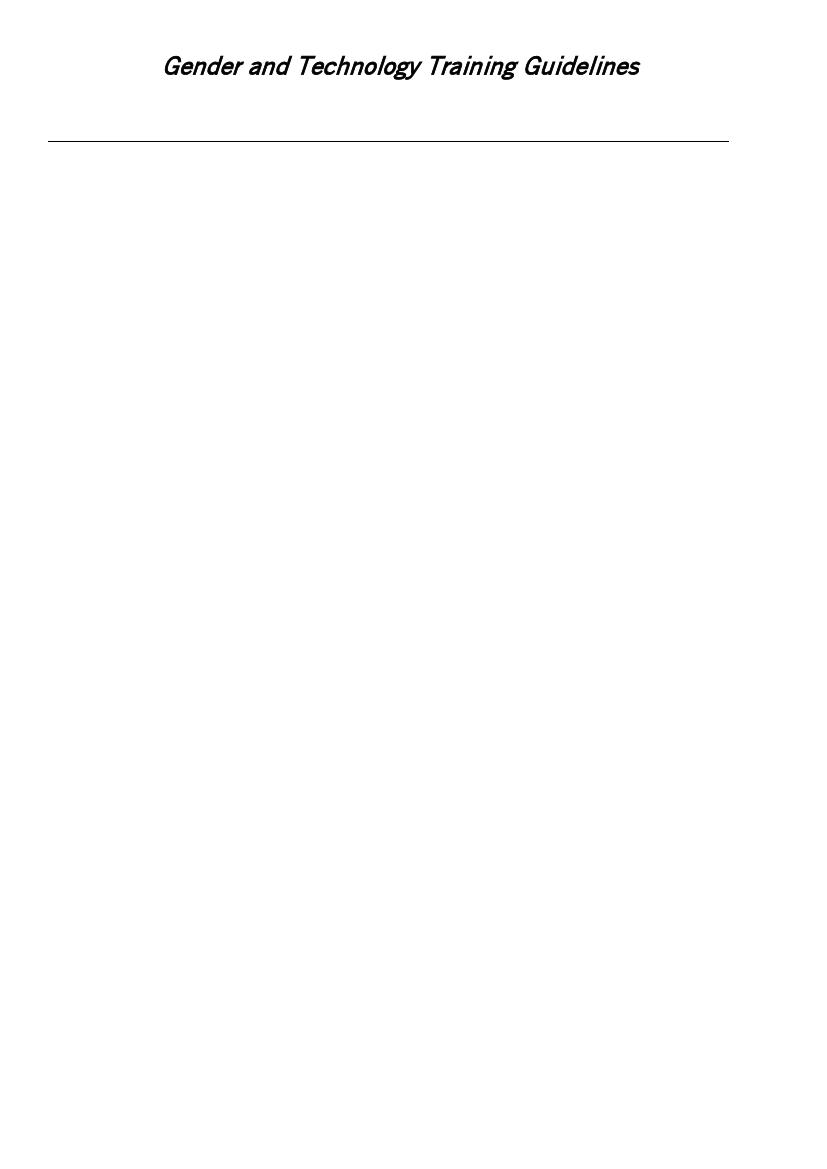
Gender and Technology Training Guidelines
SESSION 5 - DIH Posters
SESSION 7 - Handouts
HAND OUT 1
THE THEORY OF GENDER
1. Gender is one of the ways in which society is organised. Other ways are by class,
ethnicity, religion and age.
2. Gender is a social, not a biological construct.
SEX refers to biological differences and the functions of women and men in creating
children.
GENDER refers to the attitudes, characteristics, roles, values that are determined,
shaped and perpetuated by society - that society considers appropriate for men and for
women.
3. Gender allocates to men and women different, but often complementary, overlapping
roles, responsibilities and activities.
4. Both men and women contribute significantly to the social and economic well being of
families - and their respective contributions are essential to the survival, maintenance
and growth of communities and countries.
“Traditional” Gender Areas of Contribution
Women
Household maintenance/child care
Family/social relations
Culture/spirituality
Production for consumption/sale
Men
Production for consumption /sale
Public sphere/external relations
Politics
Protection
5. Gender has given women and men different life experience, knowledge, perspectives
skills and needs. Both are valid and valuable.
6. Gender relations are unequal. In many societies, women are subordinate to men and
traditionally dependent on men. Women are vulnerable to overwork, poverty,
exploitation, oppression and violence.
41